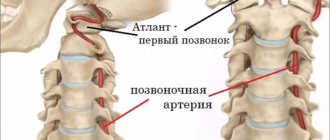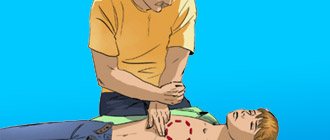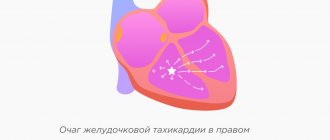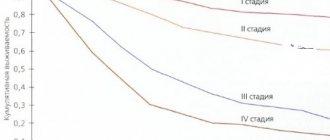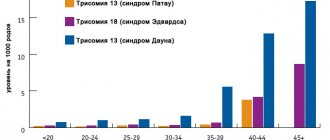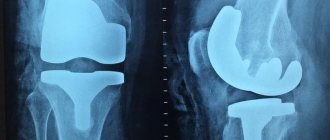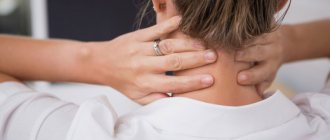Reflexologist
Zhogoleva
Irina Dmitrievna
23 years of experience
Reflexologist of the first category, member of the International Professional Association of Complementary, Alternative, Traditional Medicine and Psychologists, member of the Professional Association of Reflexotherapists of Russia
Make an appointment
A feature of reflexology treatment, like all other non-medicinal methods, is the mobilization of the body’s own resources, the active involvement of all the patient’s organ systems at the same time in the healing process. Such a powerful participation of the vital forces of the body gives a very fast and quite effective response of the body to the influence.
Currently, reflexology is often included in the overall treatment of many diseases. In some cases, it can be prescribed independently, when for some reason conventional methods of therapy cannot be used (intolerance to drugs, unsuccessful treatment with them, allergic reactions, etc.)
The most favorable results are achieved with complex treatment in the early stages of the disease, while many diseases with organic changes can be treated over a longer period of time.
In each specific case, the selection of points, the method of influence, the number of sessions are determined individually, based on the leading syndrome, the patient’s age, and general condition. When prescribing reflexology, you should not abruptly cancel previously long-term treatment, but do it gradually and subject to the beneficial effects of reflexology.
How it works
All methods of reflexology are based on the impact on sensitive points of the body, called acupuncture points, which differ in the nature, strength, and duration of the therapeutic effect.
An acupuncture point is an area of the human body with an area of 1 to 10 mm, which has a number of features. The tissues of these zones have increased blood circulation and lymph flow, they absorb oxygen more intensively, and are distinguished by the special structure of their nerve fibers and vascular network. It has been established that the bioelectric characteristics of acupuncture points of a healthy and sick person differ.
Such areas can be located on the skin, muscles, subcutaneous tissue, etc. Today, experts know approximately 700 such points distributed over the surface of the human body. Most of them are concentrated in the area of the head and limbs.
People have acupuncture points from birth; they are located in a strictly defined order, the same for everyone, along conventional lines called meridians. There are 14 such meridians in the human body, interconnected into a single functional-energy network.
As medical practice shows, already 5 minutes after irritation of an acupuncture point, a restructuring of intracellular metabolic processes begins, and the number of leukocytes in the blood changes.
The effectiveness of the methods used by a doctor of this specialization is based on the interaction of 3 factors.
- Place of influence - selection of the desired acupuncture point.
- Method of influence . Irritation of the same active zone can have a different effect when choosing different methods of influence, which can be inhibitory or excitatory in nature.
- The moment of irritation , selected not only in accordance with the type of disease, but also taking into account all pathological manifestations, as well as the biorhythms of the patient’s meridians.
Taking into account the listed factors means the individualization of reflexology treatment, as it implies a refusal to use standard approaches and the development of treatment tactics depending on the individual characteristics of the patient’s body.
to contents ^
Reflexologist: how is the appointment?
Be sure to have a medical history with recent tests. This will make it easier for the specialist to review your medical history and prescribe a course of procedures.
The appointment begins with a personal examination and medical history. The patient’s lifestyle, nutrition, and previous injuries or major surgeries are also always taken into account. Based on the information received, the doctor can prescribe the correct course of treatment. However, it should be understood that the result of treatment largely depends on how the patient himself follows the recommendations of the reflexologist.
What methods does a reflexologist use?
This specialist uses in his practice a variety of ways to influence special areas of the human body.
- Acupuncture (acupuncture, acupuncture) – manipulation of special needles, accompanied by damage to the skin and deeper layers. Varieties of this method are: microacupuncture (microneedles are used) and polymicroacupuncture (manipulation of a beam of microneedles), thermal acupuncture (use of needles with special attachments for a warming effect), electroacupuncture (electric shock using special needles), pharmacoacupuncture (introduction of drugs to special points on the body injection method).
- Manopressopuncture (acupressure) – influence on sensitive points by applying finger pressure. This method is especially recommended for the treatment of children and patients with hypersensitivity or intolerance to acupuncture.
- Applicopressopuncture is a mechanical effect on the skin (without damage) by applying special balls or thin polished circles made of red copper, stainless steel, and precious metals.
- Vacuum pressopuncture (cupping massage) is an irritating effect on certain areas of the body with medical cupping.
- Thermopuncture is a thermal effect on sensitive areas. It can occur without damage to the skin or involve a 1st degree thermal burn.
- Cryopuncture (cryotherapy) is the use of liquid nitrogen to influence sensitive areas of the body.
- Electropuncture is the application of electric current by applying electrodes to specific areas.
- Heliopuncture is the effect of light on reflexogenic zones.
- Phonopuncture is the action of microwaves on sensitive points.
- Laser puncture is the use of laser beams for therapeutic purposes.
- Magnetopuncture (magnetotherapy) is the use of magnetic fields in medical practice.
- Apyreflexotherapy is the introduction of bee venom into the area of active points.
The main advantage of all reflexology methods is that they are carried out without introducing chemical medications into the body, which could potentially cause negative side effects. With the use of reflexology, it is possible to reduce the required dose of medications.
to contents ^
Treatment methods
A reflexologist is a versatile specialist who treats many diseases. That is why doctors of other specialties often advise turning to him. Impact on biologically active points can cure both an individual organ and improve the health of the entire body. Reflexology methods involve influencing the human body. Even in ancient times, it was noticed that a person instinctively rubbed a sore spot to reduce pain and accelerate the healing of wounds and injuries. There was also a clear beneficial effect of massaging specific points (zones) on the functioning of a particular organ. All this gave impetus to the development of reflexology as a science. It has been improved over many centuries and has now gained wide popularity among both doctors and patients. And this is no coincidence, because acupuncture has a number of advantages, namely:
- does not cause pain - sessions are comfortable and completely painless;
- provides a quick therapeutic effect;
- does not require medication;
- helps against most known diseases with a minimum of contraindications;
- has no adverse reactions such as allergies or hypersensitivity.
Reflexology finds its application in all medical fields.
Reasons to visit a reflexologist
The peculiarity of the techniques used by this doctor is that they affect the entire body, so the indications for his consultation are very extensive.
- The rehabilitation period after injuries and surgical interventions.
- Frequently recurring infectious diseases.
- Painful manifestations of premenstrual syndrome and menopause.
- Muscle spasms.
- Malfunctions of the digestive system.
- Headache.
- The presence of chronic pathologies of various organs and systems.
- Functional autonomic disorders.
- Feeling of chronic fatigue, disturbances in the psycho-emotional sphere, insomnia, increased anxiety.
to contents ^
Diagnosis of the disease
Diagnosis of adhesions in the pelvis is carried out using various studies:
- Diagnostic laparoscopy. This method can most accurately see adhesions and assess the severity of the process. Diagnosis is carried out under local (or general) anesthesia; a small incision is made through which a camera is inserted.
- Ultrasound of the pelvic organs;
- Hysterosalpingography (performed using X-rays or ultrasound and contrast agents);
- MRI of the pelvic organs.
The necessary examination (or set of examinations) will be prescribed to you by your attending physician.
What diseases does a reflexologist treat?
This doctor is a universal specialist; his therapeutic methods are used in complex therapy of a large number of diseases. Therefore, doctors of various specialties often advise patients to consult a reflexologist.
As medical practice shows, reflexology is effective primarily in the treatment of functional pathologies that arise due to failures in the nervous regulation of organs and systems.
The assistance of a doctor of this specialization will be useful in the complex treatment of the following ailments:
- Dysfunctions of the nervous system: multiple sclerosis, neuralgia, paresthesia, neurosis, stuttering, enuresis, neuritis.
- Sexual disorders.
- Consequences of traumatic brain injuries, cerebrovascular accidents, strokes.
- Treatment of addictions: alcoholism, substance abuse, drug addiction, smoking cessation.
- Hypertonic disease.
- Ophthalmological ailments: blepharitis, conjunctivitis, optic neuritis, glaucoma, retinal degeneration, myopia, etc.
- Gynecological pathologies: premenstrual syndrome, menstrual irregularities, some types of infertility, negative symptoms during menopause, dysmenorrhea and hypermenorrhea.
- Pathological conditions of the musculoskeletal system: vertebral osteochondrosis, scoliosis, polyarthritis, arthrosis, etc.
- Respiratory diseases: bronchitis, tracheitis, pneumonia, etc.
- Pathologies of an allergic nature: bronchial asthma, allergic rhinitis, urticaria, Quincke's edema.
- Digestive pathologies: dyspepsia, gastritis, gastroenteritis, gastric ulcer, constipation, esophageal stenosis, intestinal colic, gastric atony, chronic pancreatitis, etc.
- Diseases of the ENT organs: rhinitis, laryngitis, sinusitis, pharyngitis, etc.
- Diseases of the excretory system: pyelonephritis, urethritis, cystitis.
- Cardiovascular diseases: phlebitis and thrombophlebitis, arterial hypertension and hypotension, vascular atherosclerosis, varicose veins, angina pectoris, heart rhythm disturbances, etc.
- Rheumatoid arthritis.
- Endocrine disruptions: obesity, hypothyroidism.
- Diseases of the male reproductive system: prostatitis, aspermia, male infertility.
- Pathological conditions of the skin and hair: alopecia (baldness), dermatitis, acne, eczema, psoriasis, furunculosis.
Reflexology is used for anesthesia in situations where pain relief with medications is undesirable due to the high likelihood of allergic reactions, prolonged pain, and individual intolerance. As an anesthetic method, it is often used in the postoperative period, in some dental and otolaryngological interventions.
Reflexology methods are also applicable to healthy people to improve performance, support the body during periods of increased demands placed on it and stimulate natural defense mechanisms.
Reflexology not only helps fight the manifestations of specific ailments, but also heals the body as a whole, increasing its resistance to adverse factors.
to contents ^
Relative readings
- Thyrotoxicosis with or without goiter.
- Diabetes.
- Obesity.
- Hypothalamic syndromes without pronounced neuroendocrine and metabolic disorders.
- Gout.
- Encephalitis, myelitis, encephalomyelitis, consequences of acute polio.
- Progressive muscular dystonia.
- Shaking palsy (Parkinson's disease).
- Multiple sclerosis.
- Cerebral palsy.
- Epilepsy.
- Syringomyelia.
- Peripheral retinal degenerations, focal retinochoroiditis, acute and subacute iridocyclitis, vascular disorders of the iris and ciliary body.
- Glaucoma (initial form, pain syndrome).
- Otosclerosis.
- Paroxysmal tachycardia, unspecified.
- Transient cerebral ischemia, long-term consequences of cerebrovascular disease (with moderate dysfunction).
- Pain syndromes in diseases of the gallbladder and biliary tract.
- Chronic pancreatitis.
- Pain syndromes in organic diseases of the genitourinary organs.
Reflexotherapist working with children
Relative safety and a minimum of contraindications make reflexology acceptable in the treatment and prevention of ailments in children.
The help of a reflexologist in childhood will be useful in the following situations:
- High nervous excitability, restless sleep.
- Recurring colds.
- Digestive problems.
- Allergic manifestations (atopic dermatitis, urticaria, bronchial asthma, allergic rhinitis).
- Stuttering.
- Enuresis.
- Delayed speech, mental, physical development.
- Vegetovascular dystonia.
- Acne in adolescence.
When working with young patients, the reflexologist uses gentle methods: magnetic therapy, ball therapy, acupressure.
If acupuncture is necessary, special children's needles are used for it - short and thin. The discomfort experienced by the child when using them is usually insignificant, and they disappear within a minute after the start of the session.
During the procedure, an experienced specialist always tries to make sure that the little patient does not experience unpleasant emotions: he will turn on a cartoon and tell an entertaining story.
A treatment session for children takes from 5 to 20 minutes. A children's reflexology course on average includes 10 consecutive procedures performed at intervals of 1-3 days.
to contents ^
Why patients choose us
Our reflexologists are highly qualified and experienced practitioners who follow the latest trends and advances in their field. We strictly observe sanitary measures and use only disposable instruments. Needles and other devices are opened in the presence of the patient. We guarantee full treatment, from consultation to receiving recommendations for relapse prevention. After achieving the effect, the doctor will give advice on nutrition and exercise to avoid recurrence of the disease in the future.
Contraindications to reflexology
The advantage of reflexology is its relative safety: the possibility of serious complications is minimized. When using these methods, there are no violations of the physiological functions of the body, allergic reactions and intoxication of the body are excluded.
However, in some cases it is not recommended to use reflexology:
- Acute infectious diseases.
- Newborn period and old age (over 75 years).
- The presence of any neoplasms.
- Pregnancy.
- Severe renal and heart failure.
- Acute mental disorders.
- Pathological conditions of the blood and hematopoietic organs: anemia, thrombocytopenia.
- Conditions accompanied by an increase in temperature.
- Severe exhaustion.
The reflexotherapeutic effect may have undesirable consequences due to the use of psychotropic and hormonal drugs.
You should not carry out such procedures immediately after physical activity or a hot bath.
It is not recommended to carry out reflexology simultaneously with radiation therapy; after it, a visit to a doctor of this specialization should be made no earlier than 4-6 months later.
Before resorting to the help of a reflexologist, it is necessary to undergo a medical examination and clarify the diagnosis.
to contents ^
Advice from a reflexologist
You can perform some manual methods of reflex action yourself, knowing the location of the necessary points and having a mirror in front of you. You can massage active points anywhere, wherever you are: in the office, at home, in an educational institution. By periodically using simple actions, you can not only slow down the development of pathology, but also avoid relapses in the future.
Reflexology is also convenient and useful because it allows you to detect and treat the disease in the initial stage, when standard medical methods cannot yet determine the presence of the disease in the patient. To determine the disease at the initial stage of development, you should independently pay attention to changes in the shade and structure of the skin, signs of pigmentation, and hair growth disorders.
Almost any disease is much easier to prevent than to treat. This rule is quite applicable in practice if you follow the following recommendations of a reflexologist:
- the body needs proper rest;
- nutrition should be balanced and timely;
- physical activity should be moderate;
- Every day you should spend at least one hour in the fresh air;
- all diseases must be treated promptly and completely;
- You should not self-medicate - this is fraught with serious complications.
The result of using reflexology, which is carried out by a qualified specialist, may appear already during the first sessions of stimulation of active zones.
A reflexologist is a special doctor who will help cure a disease and strengthen the body without using traditional pills, injections and other drugs. This specialist, of course, is not omnipotent: serious pathologies (cancer, leukemia, AIDS) are beyond his control. However, it copes with many diseases quite effectively.
In addition to healing, it will give you a feeling of harmony, calm, physical and mental balance.
Medical specialties
